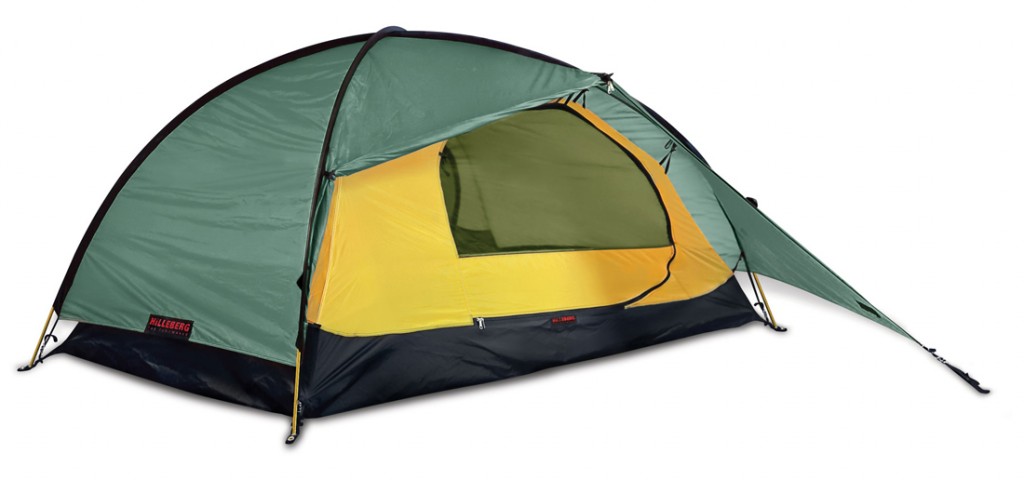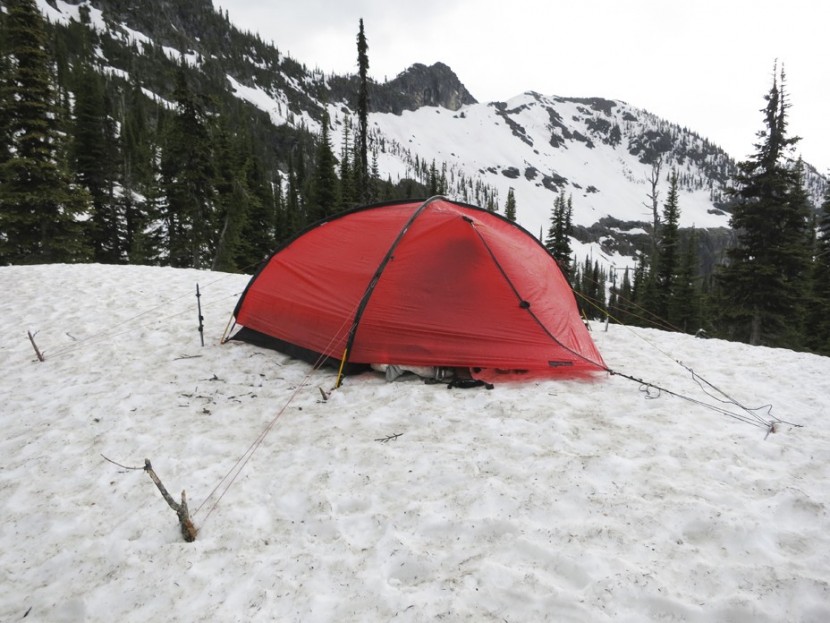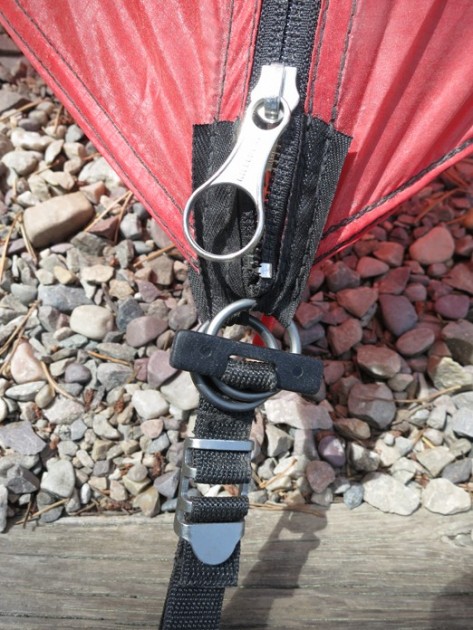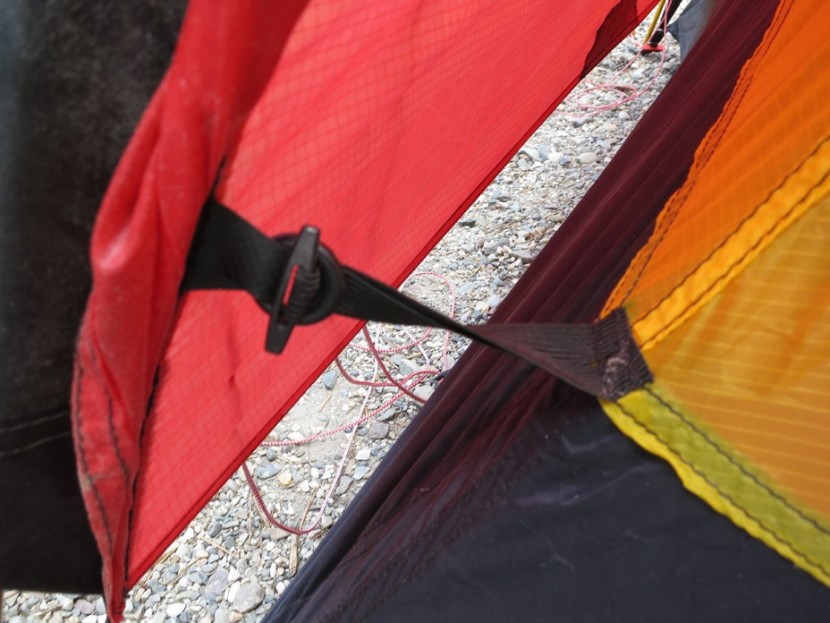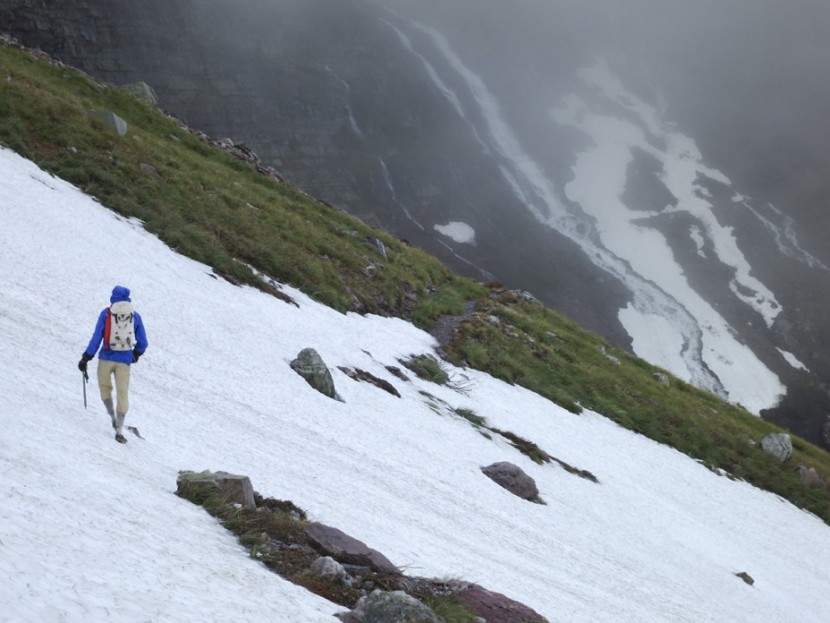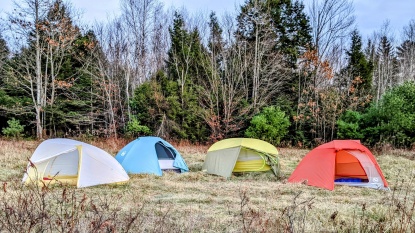Hilleberg Rogen Review
Our Verdict
Our Analysis and Test Results
Introduction
The Hilleberg Rogen is our highest rated two-door backpacking tent. The other 11 tents in the same class don't come close to matching the Rogen's performance. Furthermore, of the 32 total tents tested, we believe the Rogen is the best tent for people who mix all types of three-season camping activities: car camping, remote basecamps, and serious wilderness travel.
Weather Resistance
The Rogen takes weather resistance very, very seriously. In the section below we discuss how the tent's fabrics and pole design contribute to its strength, durability, and provide excellent protection from the elements.
Hilleberg uses Kerlon 1000 for the rain flies on their three-season tents. This fabric is a silicone impregnated ripstop nylon that's lighter and not as strong as the fabrics used on their winter tents, but impressively strong for a three-season fabric; its warp break strength is 22 lb/in. (For comparison purposes, the 15D PU/Sil fabric used on the Brooks Range Foray breaks at 7 lb/in, the SilNylon used on Mountain Laurel Designs tarp shelters breaks at 15 lb/in.) Kerlon 1000 is the strongest SilNylon used on any backpacking tent we've tested. The Rogen's floor is likely to be the most durable of any backpacking tent tested. Its poles are top-notch too.
Pole DesignThe Rogen adds a creative twist to the classic two-door tent design. Like most others, it has two poles that cross corner to corner, but instead of attaching the top crossover pole with an integrated hub (most companies partner with DAC for these) or mounting it on top of the pole intersection with non-adjustable clips or partial sleeves (the second most popular method used on other tents), Hilleberg sends the cross pole through an adjustable pole sleeve. This method is stronger and more reliable than any other because the poles don't need to be bent into place, there are no plastic parts to break, and the pole cannot come out of the sleeve.
The main poles also use pole sleeves, but unlike Hilleberg's winter tents, they slide completely through the sleeve and into grommets. The poles then tighten with straps that have strong metal friction adjustments. We believe this system is significantly stronger and more reliable than plastic clips that are used on every other double-wall backpacking tent we've tested (sleeves are our preferred pole attachment method for mountaineering tents).
Protection From the ElementsThe Rogen is a three-season tent that incorporates many four-season tent features. High-wear areas are reinforced and the bathtub floor extends higher than most of the competition. The only significant non-structural way to increase its storm protection would be to have an inner tent constructed entirely of solid nylon (the doors are the only mesh parts). This would add weight but would make the tent highly capable of winter use.
The main weakness our testers found with the Rogen is common to many other tents: water can pool on top by the cross pole. When enough water accumulates it can slowly drip through the seams if they aren't sealed (which you need to do). This is a problem that we frequently find on tents with cross poles and/or semi-flat roofs. The solution is to seal the seams and knock the water off by shaking the tent.
Ease of Setup
Another important part of the Rogen's pole design, shared with all other Hilleberg tents, is that the inner and outer tents are linked with elasticized toggles. The tent pitches from the outside — just insert the poles, tighten them, and secure the guylines — and the tent is pitched. Unlike most double-wall tents, where the inner tent pitches first and the outer tent attached to the outside of poles, all Hilleberg tents pitch in one piece (the inner tent is suspended from the outer tent). This makes the tent much faster to pitch and prevents the inner tent from getting soaked from rain and snow. The Rogen's guylines and camming adjusters, which come attached to the tent, are both high quality and very easy to use. The strong majority of other tents tested have low-quality line that absorbs lots of water, they don't include enough guyline for all guy points, don't ship with the line attached, and don't use camming adjusters. Our testers believe the best tents should ship with the best line and the best camming adjusters. Hilleberg does, too!
Livability
The Rogen competes with dozens of other two-door backpacking tents. Its materials and pole design are stronger more durable than others, but it isn't as spacious as some of its competitors that weigh 10 to 20 ounces more. Our testers give the Rogen high marks because it balances the demands of serious backcountry travel (strength and durability) with the livability of a frontcountry shelter. No other tent we've tested walks this line as well as the Rogen. Nonetheless, taller people might prefer a higher peak height. The Rogen measures 38" from the floor to ceiling of the inner tent. Most other tents in the same class are 40" to 42" tall, which allows taller people or those who use structurally insulated air core sleeping pads (2"-3" thick) to sit more upright inside the tent. (Our six-foot-plus testers were not able to sit completely upright inside the Rogen.) We mention this not because it's a significant drawback, but because it's something to consider if you're taller or plan to spend lots of time awake inside the tent.
Adaptability
The Rogen is much more adaptable than most other double-wall backpacking tents. Its inner tent can be removed from the outer tent by releasing its toggles (takes two minutes) to create an expansive floorless tarp shelter for saving weight. Most standard double-wall tents can be “fast pitched” with the poles, fly, and footprint. The Rogen sans inner tent is better than “fast pitching” because it's lighter (fast pitching only eliminates an inner tent's mesh walls and ceiling) and more storm-resistant (splashback can accumulate on a fast-pitched footprint and get your stuff wet). Removing the Rogen's inner tent saves a significant amount of weight and can make the tent a passable option for solo backpacking trips — we suggest pairing it with the 7 oz. Mountain Laurel Designs Superlight Bivy.
Weight and Packed Size
By most backpacking standards the Rogen is not a lightweight tent. It weighs 74.5 ounces, or 4 lb 10.5 oz, on our scale, which makes it 17 ounces (31 percent) heavier than the lightest similarly sized two-door double-wall tent, the Big Agnes Copper Spur UL2, and 46.3 ounces (260 percent) heavier than the lightest double-wall tent we've tested, the Hyperlite Mountain Gear Echo II. The Rogen is more durable and stronger than all other similar double-wall tents, which is excellent, but our testers believe it's too heavy for mobile trips longer than one week. It's very comfortable, however, so some people may find it worth bringing on trips of longer duration.
Areas for Improvement
The Rogen's stakes are strong but thin. Larger ones, such as the V stakes that ship with Hilleberg's “lightweight” Kerlon 1200 winter tents, would be an improvement. Eight-inch Easton tubular stakes would be even better. Why? Because small stakes hold best in compact ground, which is found only in established campsites. Longer and/or larger stakes would provide better holding power in soft ground. Our testers also believe that Hilleberg should ship the Rogen with guyline for the two crossover guy points, which they recommend staking out during high winds. Larger interior zipper pulls would be a nice addition, as would reflective guylines.
Best Application
We believe the Rogen is best suited to people who want one tent for car camping, base camping, and for backpacking trips in severe conditions. Our testers prefer tarp shelters for serious backpacking, but if you're willing to carry the extra weight, the Rogen is an outstandingly versatile and comfortable tent. One application that the Rogen excels at is international base camping (when you travel via plane to a destination and camp for one or more weeks in the same place). In such an application the lightest and most livable tent with the greatest weather resistance will be the best; the Rogen takes the cake here.
Value
The Rogen is one of the most expensive backpacking tents we've ever tested! It costs more than all of our award-winning winter tents, and costs 4 times as much as the REI Half Dome 2, our favorite budget backpacking tent. We tested 32 backpacking tents and the Rogen is one of our highest-rated overall and is the highest rated in its class. But is it worth the price? This will depend on how much time you spend in a tent and where you go. Two examples: 1) if you backpack 10 days each summer, for three summers in a row, then you'd carrying this tent on your back for 30 days. If that was your usage, then the value question you'd need to ask is whether saving 13 ounces (compared to the REI Half Dome 2) is worth $19.50 more per day? (765-180=585/30=19.50) Our feeling is that, for most of us, the practical answer is no. Beyond the weight savings, such usage would be unlikely to take advantage of the Rogen's exceptional design and materials. Example 2) If you sleep in a tent for 30 days per year for 10 years the Rogen's 13-ounce weight savings, increased strength, and increased durability would cost $2 extra per day (compared to the Half Dome 2). Moreover, the Rogen is far more likely to withstand 300 days of use than the REI Half Dome 2 (and similar budget tents). If you desire to push the performance envelope, and have the cash to do so, then the Rogen is a great choice — actually the best choice — based on our tests.
Another value question to consider is “can two other tents provide the same or more performance for the same or less cost as the Rogen?” We believe the answer is yes. For $550 you can get the 22 oz. Mountain Laurel Designs SuperMid and the 13 oz. DuoMid Insert for backpacking ($365 and — 40 oz. less than the Rogen) and the 88 oz REI Half Dome 2 ($180) for car camping and base camping. If you want to save more weight and don't need the absolute greatest weather resistance, the Hyperlite Mountain Gear Echo II Shelter ($600, 28 ounces) and REI Half Dome 2 provide the lightest two-person double-wall tent and a comfy tent for car and base camping. Both of those options provide one tent that's more comfortable than the Rogen and another tent that's, according to our criteria for evaluation, better for backpacking, and both options provide two tents for less than the cost of the Rogen.

